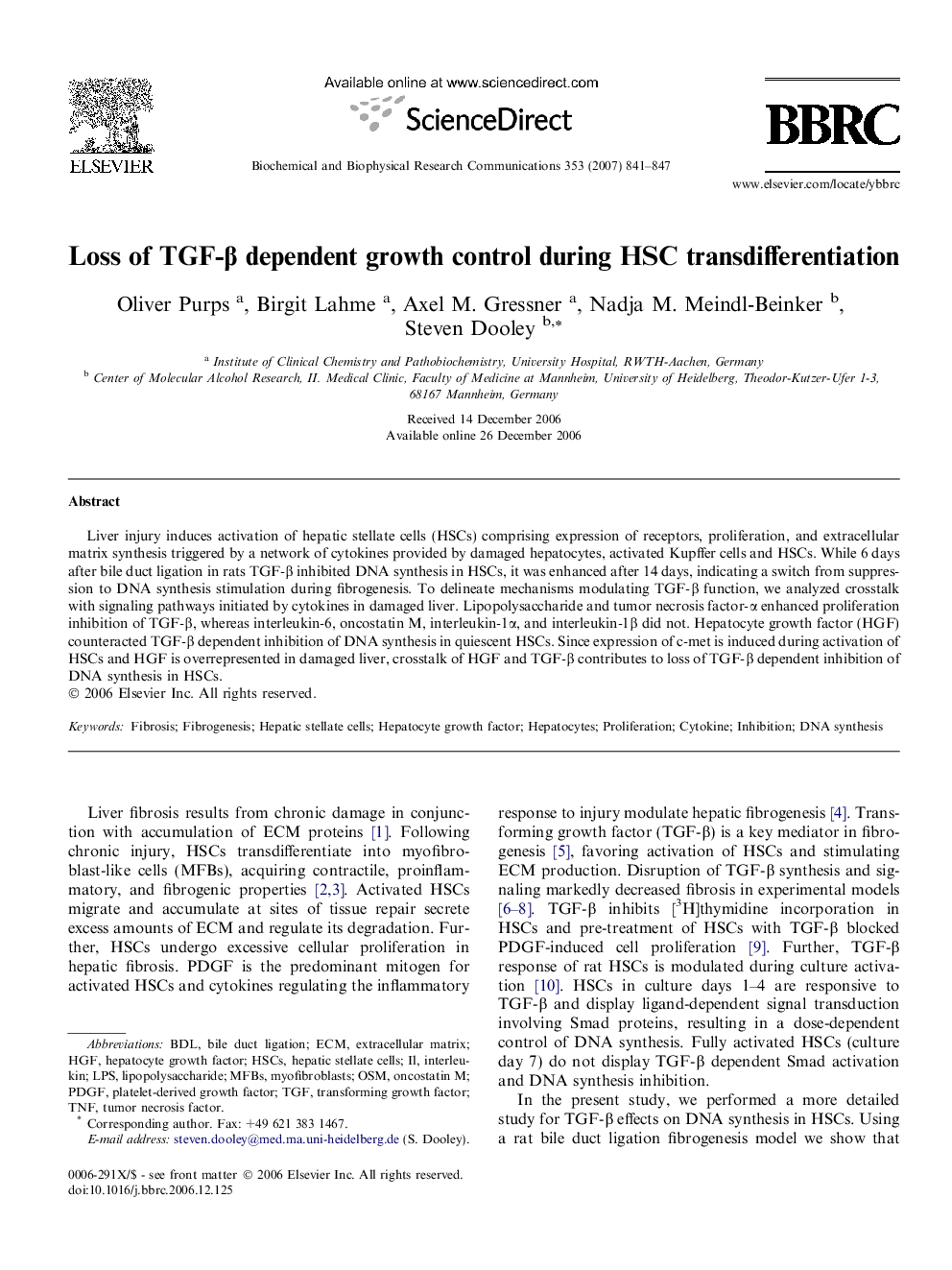| Article ID | Journal | Published Year | Pages | File Type |
|---|---|---|---|---|
| 1937692 | Biochemical and Biophysical Research Communications | 2007 | 7 Pages |
Liver injury induces activation of hepatic stellate cells (HSCs) comprising expression of receptors, proliferation, and extracellular matrix synthesis triggered by a network of cytokines provided by damaged hepatocytes, activated Kupffer cells and HSCs. While 6 days after bile duct ligation in rats TGF-β inhibited DNA synthesis in HSCs, it was enhanced after 14 days, indicating a switch from suppression to DNA synthesis stimulation during fibrogenesis. To delineate mechanisms modulating TGF-β function, we analyzed crosstalk with signaling pathways initiated by cytokines in damaged liver. Lipopolysaccharide and tumor necrosis factor-α enhanced proliferation inhibition of TGF-β, whereas interleukin-6, oncostatin M, interleukin-1α, and interleukin-1β did not. Hepatocyte growth factor (HGF) counteracted TGF-β dependent inhibition of DNA synthesis in quiescent HSCs. Since expression of c-met is induced during activation of HSCs and HGF is overrepresented in damaged liver, crosstalk of HGF and TGF-β contributes to loss of TGF-β dependent inhibition of DNA synthesis in HSCs.
